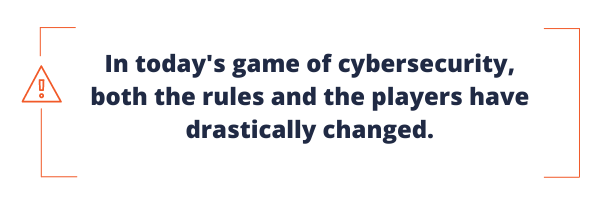How to Build a Strategic IT Budget for Your SMB | Teknologize
Many SMBs don’t actually have an IT budget; they have a list of last year’s expenses. Everything goes into one bucket, and next year’s “budget” is...

Who is hiding in your network?
Threat hunting was created out of a necessity among organizations to stay on top of advanced persistent threats (APTs).
Rather than passively waiting for threat alerts, today’s new cybersecurity model focuses on catching threats before they can do any damage.
Here’s where threat hunting comes into play. This pursuit is concerned with proactively searching for threats within a network and defending against them.
The warning signs of a cyber attack aren’t as obvious as they once were; the current threat landscape has changed. Modern attackers are smart, and their objective is to sneak past your security tools and hide in your network undetected.
What makes these modern cyber attackers so dangerous? Well, they’re acting more like legitimate organizations with entire teams working to identify ways to exploit new vulnerabilities to avoid detection and successfully hide in plain sight. Their attacks are designed for stealth and slipping past prevention, leaving many security tools powerless to stop them.

Once inside, they set up camp and explore while they plan their next move. AND, they want to make sure they don’t lose their hard-earned access. That’s where an advanced technique comes into the picture, and it’s called persistence.
Persistence is like a piece of tape placed on the latch of a door to keep it from locking.
An advanced persistent threat (APT) is a sophisticated cyber attack where a bad actor establishes an undetected existence in a network in order to steal sensitive data over a prolonged period of time.
Also termed malicious footholds, it is a mechanism that attackers use to keep access to systems across restarts, changed credentials, and other interruptions that could cut off their access all while remaining undetected.
While some attacks, such as ransomware, are loud and clear, persistence allows attackers to stay hidden.
Hunting is the activity of searching for something, most commonly referring to wild animals. While the hunt looks a bit different in the realm of cybersecurity, there’s one thing that still applies, nothing beats human instinct.
Threat hunting is an aggressive tactic that begins with the “assumption of breach”, that attackers are already inside an organization’s network and are monitoring and moving throughout it without detection. Cyber attackers can remain in a network for months undetected as they collect data, look for confidential material, or obtain login credentials that will allow them to move across the environment without any automated defense detecting their presence.
Cyber threat hunters bring a human element to cybersecurity, combining automated detection with real human threat hunters. They are skilled IT security professionals who search, log, monitor and neutralize threats before they can cause serious problems.
1. Investigate:
The installed agent looks for persistence or malicious footholds in all the places hackers use to hide.
Additionally, ransomware canaries are deployed to allow quicker and earlier detection of potential ransomware incidents.
What are ransomware canaries? Coal miners used to depend upon canaries to determine the presence of carbon monoxide. Ransomware canaries work much the same way, serving as a warning when your network is under attack so that you and your network security partner can respond to the threat fast.
2. Analyze:
Here is where we introduce threat hunting and manual analysis. Skilled IT security professionals review endpoint and agent surveys to spot threats.
3. Remediate:
This involves communicating relevant malicious activity intelligence to your network security partner so they can respond to the incident and mitigate threats.
Cyber attackers are continually advancing their evasion methods and as human defenders, we must constantly improve our detection abilities to keep pace with the latest threats.
![]() Teknologize is a SOC 2 Type II accredited Managed IT and Cybersecurity provider serving small to mid-sized businesses across Washington and Oregon. We deliver full-service Managed IT Support, Co-Managed IT Support, advanced Cybersecurity Solutions, and IT Compliance Services for regulated industries, including Healthcare, Financial Institutions, the Utilities Sector, Manufacturing, and Professional Services.
Teknologize is a SOC 2 Type II accredited Managed IT and Cybersecurity provider serving small to mid-sized businesses across Washington and Oregon. We deliver full-service Managed IT Support, Co-Managed IT Support, advanced Cybersecurity Solutions, and IT Compliance Services for regulated industries, including Healthcare, Financial Institutions, the Utilities Sector, Manufacturing, and Professional Services.
👉 Book a Discovery Call to see how Teknologize can support your business.
Our Offices
Tri-Cities, Washington – 509.396.6640 | Yakima, Washington – 509.396.6640
Bend, Oregon – 541.848.6072 | Seattle, Washington – 206.743.0981
Questions about your IT or Cybersecurity? Give us a call today!

Many SMBs don’t actually have an IT budget; they have a list of last year’s expenses. Everything goes into one bucket, and next year’s “budget” is...

“When did this happen?”“About a year ago… well, thirteen months, actually.”

Artificial intelligence is everywhere, helping small businesses automate workflows, streamline processes, and boost productivity. But here’s the flip...